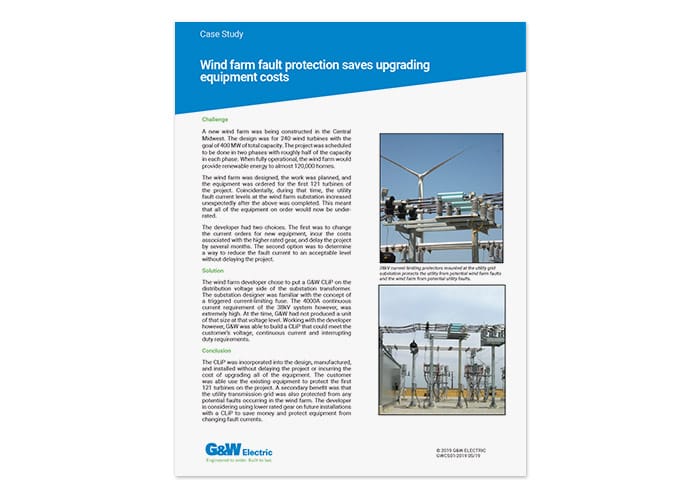CHALLENGE:
A new wind farm was being constructed in the Central Midwest. The design was for 240 wind turbines with the goal of 400 MW of total capacity. The project was scheduled to be done in two phases with roughly half of the capacity in each phase. When fully operational, the wind farm would provide renewable energy to almost 120,000 homes. The wind farm was designed, the work was planned, and
the equipment was ordered for the first 121 turbines of the project. Coincidentally, during that time, the utility fault current levels at the wind farm substation increased unexpectedly after the above was completed. This meant that all of the equipment on order would now be underrated. The developer had two choices. The first was to change the current orders for new equipment, incur the costs associated with the higher rated gear, and delay the project by several months. The second option was to determine
a way to reduce the fault current to an acceptable level without delaying the project.
SOLUTION:
The wind farm developer chose to put a G&W Electric CLiP® on the distribution voltage side of the substation transformer. The substation designer was familiar with the concept of a triggered current-limiting fuse. The 4000A continuous current requirement of the 38kV system however, was extremely high. At the time, G&W Electric had not produced a unit of that size at that voltage level. Working with the developer however, G&W Electric was able to build a CLiP that could meet the customer’s voltage, continuous current and interrupting duty requirements.
CONCLUSION:
The CLiP was incorporated into the design, manufactured, and installed without delaying the project or incurring the cost of upgrading all of the equipment. The customer was able use the existing equipment to protect the first 121 turbines on the project. A secondary benefit was that the utility transmission grid was also protected from any potential faults occurring in the wind farm. The developer is considering using lower rated gear on future installations with a CLiP to save money and protect equipment from changing fault currents.

